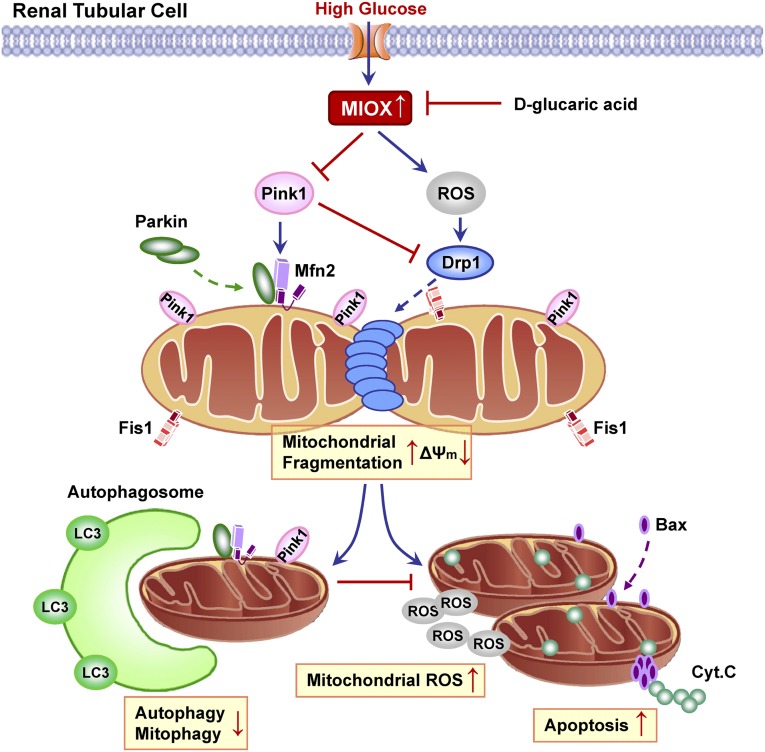Figure 10.
Schematic diagram depicting the conceivable cellular events by which MIOX disrupts mitochondrial integrity under HG ambience, which results in renal tubular cell injury. Under HG ambience, MIOX is upregulated in tubular cells, which then modulate mitochondrial dynamics through two conceivable pathways. (1) MIOX increases intracellular ROS generation through transcriptional mechanisms, which promote Drp1 activation and mitochondrial translocation.10,18,39 (2) Upregulated MIOX reduces Pink1 expression, which has a negative regulatory effect on Drp1 activity, such that Pink1 inhibition would increase Drp1-dependent mitochondrial fragmentation.40 In this regard, Drp1 is activated and translocates to MOM through these possible MIOX-mediated pathways, where it interacts with Fis1, which would lead to mitochondrial fragmentation. Excessively fragmented mitochondria are depolarized and lose viability for the fusion process, but the surveillance of mitochondrial quality control allows these injured organelles to be recycled by mitophagy. However, under HG, both autophagy and mitophagy are suppressed, partly because of the activation of MIOX, which inhibited Pink1 and conceivably, prevented subsequent Parkin translocation into mitochondria, thus blocking the interaction between Parkin and Mfn2 on MOM that eventually resulted in a compromise in the process of mitophagy. As a result of insufficient autophagic removal of mitochondria, the accumulation of fragmented and damaged mitochondria triggered ROS overproduction as well as the mitochondrial apoptotic pathway, by which the apoptogenic Bax translocates and inserts into mitochondria, whereas Cytochrome C is released into the cytosol, leading to apoptosis. Interestingly, pharmacologic inhibition of MIOX by d-glucarate restores mitochondrial quality control machinery by preventing mitochondrial damage and cell apoptosis, thereby attenuating hyperglycemia-induced tubular damage. Cyt.C, Cytochrome C.

